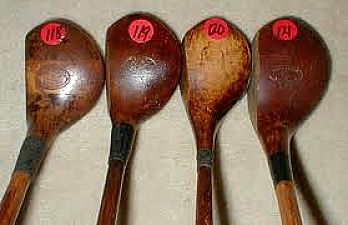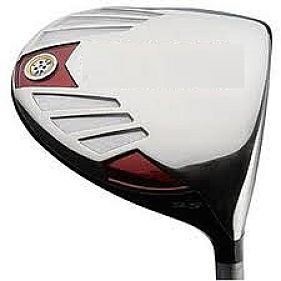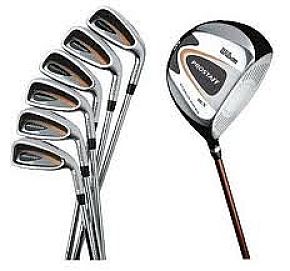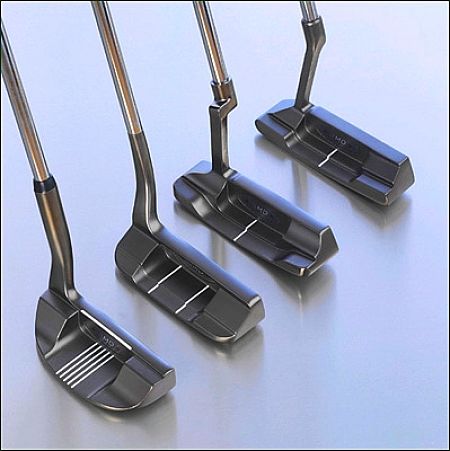Despite the Hype, High-Tech Modern Golf Fails to Break Old Records
Despite the millions of dollars that have been spent on high tech developments of golf clubs and balls, it to took 33 years to break the record driving distance on a golf course of 515 yards (471 m). This record was made by a 64 year old, using a club with a small persimmon wood driver. Modern players with advanced titanium heads and carbon fibre shafts could not hit the ball further for 30 years.
Why did three decades of improving golfing technology fail to make an impression? Is all the advertising material about high tech advances in golf equipment useless hype?
On 25 September 1974, Mike Austin then aged 64 years hit a golf ball 515 yards (471 m) from the tee on a Las Vegas golf in the US National Seniors Open with a 43.5" steel shafted persimmon wood driver and balata ball. The hole was 450 yard par 4, so his ball ended up more than 50 yards past the green.
This record was established a year before Tiger Woods was even born.






World number one Lee Westwood drives the ball an average of 295 yards (270 m). The PGA Tour has a list of longest drives since 1992. Tiger Woods, often thought of as one of the longest drivers on tour, ranks ninth with a drive of 425 yards (389 m). The longest hitter is Davis Love III who hit a drive 476 yards (435 m) in 2004 at the Mercedes Championships, giving him 28 yards (26 m) advantage over the runner-up.
The Guinness Book of World Records has no record for the longest overall drive distance, but instead lists the longest distance travelled by the ball in the air. That record stands at 408 yards (373m) by Karl Woodward in 1999 (11 years ago).
After more than 30 years of high tech development Mike Austin's record in 1974 was finally broken on July 17, 2007, by Mr. Mike Dobbyn who hit a drive on the 18th hole, during an Official Harmon Tour event, with a recorded length of 551 yards (504 m) !
Mike Dobbyn is a massive mountain of a man – 6’8” tall and close to three hundred pounds of muscle.
There are several other records:
Tarmac Driving Record - Paul "St. George" Slater his a golf ball 720-yards (658 m) on Feb. 19 2005 on the tarmac at the London City Airport. The world-record attempt was part of the London Golf Show. The previous record of 696 yards (636 m) was set not long ago by PGA Tour star Stuart Appleby.
Long Drive Championship Record - Long drive is a special event not done on a golf course. It is done on a level target strip of mown grass about 40 to 60 yards (35 to 55 m ) in width, instead of on a regular golf course. Competitors usually have a set number of hits, from 3 to 8. They have to try to hit the ball as far as possible keeping the ball within the grid, within a set time limit. There are regular championship event throughout the year. Dedicated Professional long drive hitters can average more than 350 yards (320 m) in competition. This is much longer that the 200 yards (183 m) averaged by amateurs and about 300 yards (274 m) hit by the leading PGA Tour drivers. The better PGA hitters can exceed 400 yards (366 m). The listed world record drive in a long drive competition is 539 yards (494 m) by a golfer named Scott Smith. There are various records for different competitions. The record distance achieved by an Englishman named Joe Miller, in The RE/MAX European Long Drive Championship in September 2005, was 474 yards (433 m). George "The Animal" Slupski set a new world record of 405 yards (370 m) at the RE/MAX Long Drive Championship held in Mesquite, Nevada on November 5, 2010.
Longest one-handed golf shot ( Guinness World Records ) - is 282 yards (257 m) by Cristian Sterning (Sweden) on June 18, 2005, at the St. Andrews Bay Golf Resort and Spa, St Andrews in Scotland.
The longest golf shot whilst seated - is 123 yards (113 m ), on 27 November 2009, by Dale Sheppard at the 11th hole on the Moonah Links, Mornington Peninsula, Victoria, Australia.
Longest Golf Dive in Space - Flight Engineer Mikhail Tyurin (Russia) assisted by Commander Michael Lopez-Alegria (USA) teed-off in sace during a 6-hour spacewalk outside the International Space Station (ISS) on 23 February 2006. The space hit was allowed by the Russian space agency as a means of raising cash for sponsorship. NASA estimated that the ball would orbit for three days before cashing into the atmosphere after travelling a distance of 2.02 million km (1.26 million miles). The Russians gave a much higher estimate at 740 million km (460 million miles)!
So why haven't the World Record Course Records been Broken?
Golf has gone High-Tech in a big way. Clubs are lighter, more forgiving to mis-hits and are much more powerful. They have gone from being made of wood, fibre-glass then to steel, and finally to titanium and this has greatly affected how far the ball is being driven. There have been major advances with golf balls. However it appears that long distance records may be more related to strength and technique rather than to the equipment.
Top players' average driving distances on the PGA Tour jumped up by over 20 yards (18 m) in the 10 years between 1990 and 2000 and nearly another 20 yards ( 18 m) between 2000 and 2003. At that point there were nine players averaging drives of over 300 yards (274 m).
There have been recent restrictions and rules that have limited club development
At that time when the first titanium technology was being developed, players were using drivers which were twice the current size limit of 460 cubic centimetres (28 cubic inches). Driving distance averages at this time were at an all-time high.
The efficiency of club faces was limited to 83% and various highly technical regulations were placed on the balls. At the start of the 2010 season, there were restrictions on nunber of grooves on a club face, and 'V' shaped grooves were still banned.
With these regulations, Bubba Watson, renowned as the longest driver on the PGA Tour for 3 of the last 4 years, has actually seen his average driving distance fall using the best new clubs. At the end of the 2009 season, it stood at 312 yards ( 285 m) per drive, a fall of 7 yards ( 6.6 m) in three years.
In fact, the PGA Tour average driving distance has remained much the same since 2003.
In the 2009 season, about 48 drives of 400 yards (366 m) or more were recorded on the PGA Tour. The longest was 467 yards (427 m) by Charley Hoffman, and while huge, it was still 50 yards ( 46 m) short of what Mike Austin achieved with inferior technology and an age disadvantage. But the simple answer could be that golfers are not always trying to hit it as hard as they can as position is often more important than yardage - a prime position on the fairway is far better than careering off another 100 yards or 100 metres into the woods.
It appears that the rules are getting in the way of new tech beating the old records.
It has been claimed that of the real innovations are not focused on increasing drive distances but in improving accuracy, consistency and a recent move for personalised clubs.
Human Power and Technique versus Technology in Golf
Despite the advances in technology, there is one fact you cannot escape - the faster you swing the club, all things being equal, the further the ball will go.
Austin is rumoured to have a swing that approached 150 mph (241 kph). A number of top pros are now swinging the club at upwards of 120 mph (193 kph).
But even for Mike Austin, distance was not everything. After hitting his record-breaking drive well past the pin, he pitched back onto the green and then three-putted for a bogey.